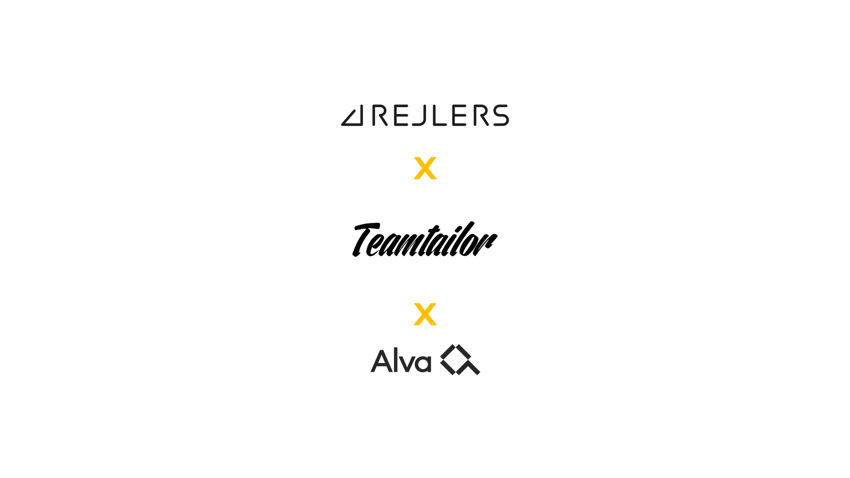From Talent Acquisition to Hiring Managers
Managers (HMs) felt capable of taking responsibility for recruitment, but HMs also felt that it was taking too much time. Additionally they lacked confidence to screen CVs and wanted interview training; however no-one had time for extensive, day long trainings.
how do I attract and develop talent and convert that to performance?
Managers felt capable of taking care of recruitment, but they also felt that it was taking too much time, they lacked confidence to screen CVs and wanted interview training - though no-one had the time to spend in day-long sessions.
To support managers, Jens installed a 5-ingredient recruitment recipe for success:
FLIR’s 5-ingredient recipe for hiring
- Hiring Manager creates the advert with TM support
- Taking core skills, HM creates questions for each candidate to answer
- Logic and personality tests
- First phone interview
- Behavioural Interview
Training Hiring Managers to prioritise core skills
The most challenging part of this process is reframing a HM’s habit from thinking about ‘one perfect candidate’, to helping them understand the simplicity and the importance of defining core skills.
.jpg?width=960&name=Webinar%20-%20How%20to%20unify%20recruitment%20in%20a%20global%20company%20(1).jpg)
Take a Sales Director. An original list of requirements was long and unnecessarily specific, limiting the scope of the talent pool. Working collaboratively, Jens reframed the ask:
From: 8+ years in managerial & Manage online teams
To: Substantial experience
From: 10 years experience with global sales
To: Substantial experience of global sales with profit & loss responsibility
Keeping the core skills requirements limited to a list of 6 - or, at a push, 8 - core skills for every position, HMs are pushed to explore what core skills are really needed to deliver the job, and to remove unhelpful ideas, e.g., years of experience, previous employers. Iterating these core skills allows the HM to uncover what truly is necessary for success, and how to proceed.
From 'years experience' to 'rate your skills'
With the core skills agreed, the HM converts them into neutral, self-report questions, allowing candidates to rate themselves on a scale, where 1 is lowest and 5 is the highest.
In the case of the Sales Director, rather than ask “How many years of experience do you have?”, FLIR asked, “How would you rate your level of experience in global sales?”.
.jpg?width=960&name=Webinar%20-%20How%20to%20unify%20recruitment%20in%20a%20global%20company%20(3).jpg)
Candidates then rate themselves, and, in the main, candidates are honest, and they appreciate the ability to rate themselves.
At the end of the questions, salary expectations are requested. Though uncommon in Sweden, is becoming more standard. This is more fair to candidate and recruiter; candidates don’t risk the time of applying for a job which can’t sustain them financially, and recruiters don’t risk time with a candidate who can’t take the job - and risk losing other great candidates.
Personality and logic tests
Candidates then move through to the Alva Labs tests. Data from the assessments and the self-report run through FLIR’s ATS, providing the Hiring Manager with a clear understanding of which candidates have the right skills to take to the next stage, and who doesn't move forwards - and why. At every state, Candidates and HMs can see and understand why decisions are made.
Interview with insight and structure
After selling the job and culture to the candidate, the HM goes through the candidate’s questionnaire, asking them to talk about the ratings they gave, and why. The candidate’s answers are again ranked, giving the Hiring Manager a structured, succinct basis to their decision making.
Each interview question reflects the vacancy - both the HM and the candidate have confidence in the validity of each question and the interview process. Additionally, both the HM and the candidate are able to know and to understand why decisions have been made:
Every question is job specific; there are no surprises.
The numerical ratings that the HM populates through the interview mean a smooth and efficient process - from the first interview, HMs know if the candidate has the right skills or experience, or if the candidate won’t be moving forwards. This makes it much easier for HMs to assume the responsibility for hiring, and to have confidence in their work and in their decisions.
When rolling out a new process over a global stage, a data driven process offers simplicity and consistency; whether you're hiring tech support assistant in India, Space Managers in sub-Saharan Africa or Service Engineers in Sweden, it doesn’t matter about the role, the team or the HM - the system works.
.jpg?width=960&name=Webinar%20-%20How%20to%20unify%20recruitment%20in%20a%20global%20company%20(4).jpg)
Why unifying and delegating to HMs is essential - and how to do it
When we simple processes, it's easy to get Hiring Managers started. Some professions that FLIR recruit might need technical or group interviews, and these can be added; however, the HM has the added bonus having a set of ratings and skills to consider when prepping the interviews.
Delegation can be tough, because recruitment is a craft
By creating simple, repeatable processes, it's easy to get HMs started and working confidently. Some professions might need additional technical or group interviews, and these can be added to the five ingredient recipe. And, when a specialist interview is needed, the HM has the added bonus of having a set of ratings and skills to consider.
Case studies are also a good step to use in a recruitment process, but when rolling out a new strategy to learners, it’s best to keep systems simple; case studies comprise more intangible ratings, and knowing how to design the case in order to harness learnings is more of a craft. If you’re training HMs who are nervous or have little experience, case studies aren’t a priority; they can come later, when your process is embedded.
Automating systems and building smooth processes allows novice HMs to make decisions with confidence, and TMs to trust that employer branding, policies and local legislation are being upheld.
With the right settings and softwares, automation also allows bias to be interrupted, and work to increase diversity at every recruitment.
By dialling down the requirement list to core skills, and asking neutral questions, we make it easier for more people to see themselves in the job and submitting applications.
.jpg?width=625&name=Webinar%20-%20How%20to%20unify%20recruitment%20in%20a%20global%20company%20(2).jpg)
Automation also provides the additional benefit of making it much easier for HMs to jump back into recruiting when they haven’t done any hiring for some time.
As we delegate, we have the opportunity to design methods that open up diversity, avoid wage drift and a great candidate experience - even when the HM isn’t experienced.
Key Takeaways
- Categorise performance elements for the vacancy into what knowledge, experiences and aptitude a candidate needs to display, to understand what profiles you’re really looking for - keep pushing and challenging the HM to understand - what are we really talking about?
- IT system support is key - using ratings from our questions, interviews and the Alva assessments means we can confirm who has the right potential. This isn’t possible through a standard ATS, and we value the accuracy that’s possible, which means partnering with the right providers.
If you’re having to engage teams to become HMs:
- Anticipate their frustration with the new responsibilities and workload
seek their feedback: what gaps do they have? what do they need to do a good job? - Always ask if the system works
- Trust that the HM is trying to do the best job
- There is likely to be some frustration with the new system; maintain the focus that this is a good way to move forwards






